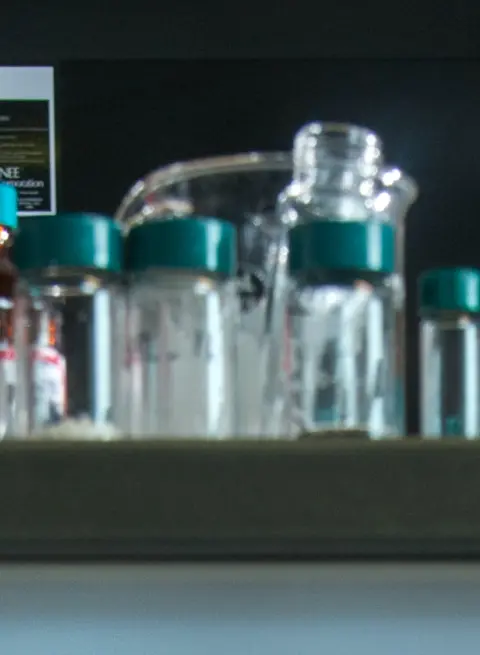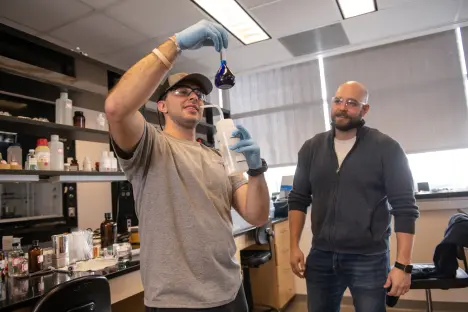
Overview
Explore the inner workings of the world with us! All of Ashland University’s Chemistry programs provide unique scientific experiences, close faculty and student interactions and hands-on experience with modern equipment.
We also offer courses in physics and astronomy!
In our courses, majors and minors, you will:
- Work side-by side with experts, both in the laboratory and field
- Gain hands-on experience with the latest equipment and instrumentation
- Prepare for a career in industry, government or education or graduate-level education

The Elements of Transformation
Students looking to go into the sciences have a lot of choices when it comes to choosing a college. But because of the continuing generosity of Ashland donors, combined with a faculty team dedicated to giving every individual student a world-class educational experience, special things are happening at Ashland. When the commitment to student transformation and donor generosity connect, the results are truly incredible.
Instrumentation Lab
The Chemistry and Physics Departments feature an instrumentation lab that stands out. With more than $2 million in equipment, students gain hands-on experience using instruments typically found in industry and research settings.
Visitors often comment on the impressive quality of our instrumentation—especially for a university of our size. Our graduates stand out to employers for their confidence and competence working with advanced tools.
In short, our lab isn’t just a place to learn, it’s a launchpad for careers.
Scholarships

Ashland University has been awarded a grant from the state of Ohio to provide Choose Ohio First Scholarships to outstanding students with interests in the natural and physical sciences. These scholarships support academically strong students who plan to continue to graduate school, health-related professional programs or employment in STEM industries after completing a bachelor’s degree.
AU Dean's Scholarship
The Dean's Scholarship was created to enhance the undergraduate academic experience for new first-time and transfer students enrolled in a major within the College of Arts & Sciences. It is a merit-based, renewable scholarship that can be "stacked" on top of other awarded AU academic scholarships. In addition, students have the opportunity to participate in unique academic communities with a focus on career coaching and preparation.
Ohio EPA Scholarship
These merit based, nonrenewable scholarships will be given to undergraduate students enrolled at an Ohio public or private college/university who can demonstrate their knowledge and commitment to careers in environmental sciences or environmental engineering. Students must be entering their Junior or Senior year. Awardees will be selected by the Academy appointed panel.
Contact Information

Professor of Chemistry
